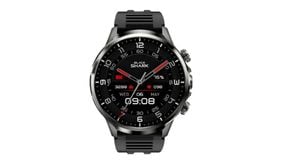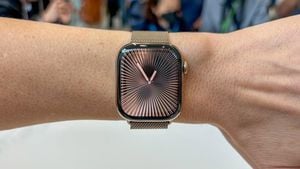NASA has officially retired its NEOWISE spacecraft, which played a pivotal role in identifying asteroids and comets over more than a decade. This mission, lasting roughly ten years, recorded over 27 million infrared images and discovered 215 new Near-Earth Objects (NEOs).
One of NEOWISE's significant achievements was the detection of dark asteroids, often challenging to spot because they absorb light much like charcoal. Many of these asteroids reside near Earth and pose potential risks, underscoring the importance of the spacecraft's mission.
The last image captured by NEOWISE showed the Fornax constellation, marking the culmination of its nearly 15-year run. This final exposure was processed at Caltech and represents NASA’s dedication to monitoring celestial objects.
This spacecraft was initially launched as the Wide-field Infrared Survey Explorer (WISE) back in December 2009. After achieving its primary goal of mapping the sky, NEOWISE was reactivated in 2013 with new objectives, focusing on detecting asteroids and comets.
NEOWISE has been instrumental in improving our knowledge of asteroids within our solar system. Among its findings was the first known Earth Trojan asteroid, which orbits the sun alongside Earth.
Over its operational years, NEOWISE not only provided valuable data but also facilitated numerous scientific advancements. This included mapping over 740 million objects, from stars to galaxies, broadening our cosmic awareness.
Lead scientist Roc Cutri mentioned the recent increase of solar activity impacting the NEOWISE's operational capabilities. While the sun's activity provided additional time for the mission, it also increased drag on the spacecraft, leading it toward its eventual descent.
Nicola Fox, associate administrator for NASA’s Science Mission Directorate, reflected on NEOWISE’s success as integral to planetary defense strategies. “The NEOWISE mission has been an extraordinary success story,” said Fox, emphasizing its contributions to our comprehension of potentially hazardous objects.
Despite NEOWISE’s retirement, it leaves behind a legacy, paving the way for new missions like the upcoming NEO Surveyor. This new mission is expected to continue and expand upon the discoveries made by NEOWISE.
NEO Surveyor will utilize advanced infrared detection technology to identify hazardous near-Earth objects, with aspirations of finding 90 percent of those larger than 460 feet. These objects threaten significant destruction if they were to collide with Earth.
The transition from NEOWISE to NEO Surveyor represents not only the end of one era but the dawn of another. Amy Mainzer, the principal investigator, remarked, “It’s the end of an era, but the beginning of a new one,” highlighting the continuity of planetary defense efforts.
NEOWISE’s capacity to detect these asteroids was bolstered by its sensitivity to infrared signals, which are emitted when objects are heated by the sun. This technological advancement marked NEOWISE as one of the first to track such objects effectively.
The mission recorded its last command on August 8, 2024, officially shutting down operations after nearly 15 years of service. Before its final bow, NEOWISE captured significant data, contributing immensely to our planetary defense framework.
Scientists have emphasized NEOWISE’s importance, noting its ability to identify faint asteroids and solve astronomical enigmas within our solar neighborhood. Its retirement may bring closure, but the impact of its findings is likely to linger.
Throughout its operational tenure, NEOWISE has also gained public attention, most memorably for discovering the comet named NEOWISE, which dazzled stargazers globally. Many appreciated the fleeting beauty of this comet as it graced our skies during summer 2020.
This spacecraft operated post-coolant depletion, persevering against the odds and showcasing the resilience of NASA’s technology. Remarkably, NEOWISE exceeded its initial expectations, yielding data far beyond what scientists predicted.
Navigators of the cosmos have now begun to turn their eyes toward the future as the NEOWISE legacy sparks the next generation of astronomical explorations. The mission’s contributions might shape significant advancements within NASA’s planetary defense strategies.
The NEOWISE mission played both practical and symbolic roles for researchers needing to protect Earth from potential threats. With NEO Surveyor on the way, the groundwork laid by NEOWISE will inform future endeavors.
Each of NEOWISE’s accomplishments has served as stepping stones toward catching sight of more elusive astronomical phenomena. Researchers look forward to leveraging its legacy as they explore new frontiers within our universe.
NASA and its dedicated team members have bid farewell to NEOWISE, celebrating the numerous discoveries and advancements it made over its lifetime. The mission may be concluded, but its story and impact will echo throughout future explorations.



